575
6 tests for a child that will help to define his character
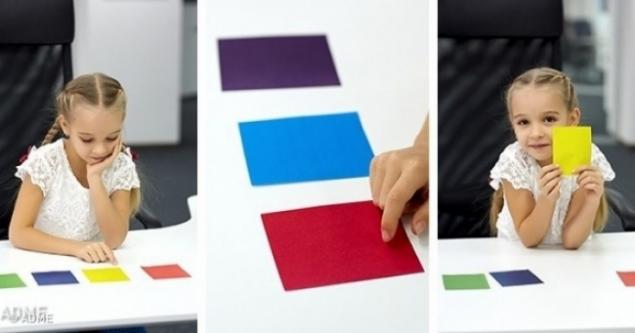
Adults sometimes difficult to understand what is going on in the mind of kids. So we've put together tests that will help parents determine the type of thinking and traits of the child, to find a common language easier.
1. Marshmallow test (4-5 years)
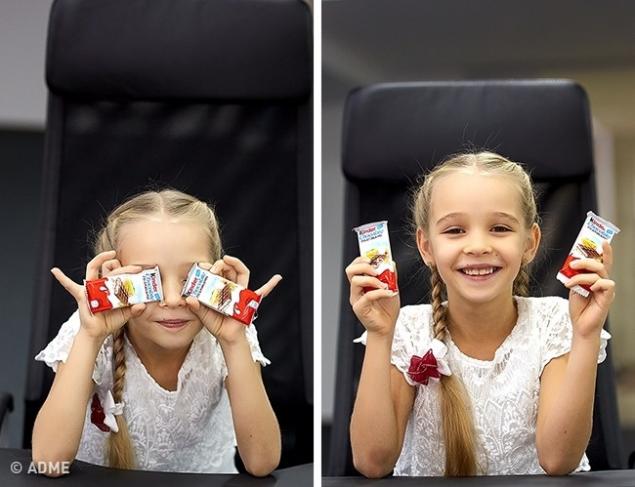
Another name for test — a test of delayed gratification. It helps to understand what type of thinking is closer to little strategic or tactical. Strategist ready to abandon less lucrative offers today, tomorrow, if possible benefits from the agreement will increase. Tactics are not waiting for tomorrow and working with what you have today.
What you will need: food, a table, a chair and a room where nothing can distract the child (toys, phones, and televisions).
What to do: on the table in front of the child a treat (marshmallow, candy, chocolate bar or small cake). We explain to the child that this sweetness offered to him and he can eat it as soon as I remain in the room alone. But if he can handle the temptation and wait 10 minutes, we'll be back with another surprise, and then he will receive two times more. If the returning adult at the table will not be food, the second it receives.
On that note: some children eat the sweetness immediately. Many struggle with temptation till the end: close your eyes with your hands, pull at hair, play with a treat to distract thoughts. But in the end eat dessert. This is tactics. One third of children waiting for an adult return and receives a double reward. It strategists.
2. Game with a color designer and coloring books (3 to 7 years)

The test helps to recognize the traits of the introvert or extrovert in a child.
What you will need: for small children it is better to choose a color designer with great parts, for children from 5 years — children's coloring book and crayons or markers.
What to do: give a young child a designer and offer to build a cabin. No matter what shape it happens. Give a little to the architect complete freedom!
The older children give a coloring book and markers and explain that no need to hurry. To paint the picture should be at a comfortable pace and as he wants. The colors he chooses to paint a particular part of the picture, not play value.
On that note:if a child has collected a house of colored components, note whether there is order in your choice of colors. If the construction he piled cubes combining together the color, or each part of the house has its own color, then we have a child with the characteristics of the introvert. He drew attention not to the form itself, and its contents and characteristics of the parts.
If the child got a coloring, look at how carefully he painted over the drawing. If drawing details are shown within the area and within the lines, then we face an introvert.
3. Test with salty and sweet porridge
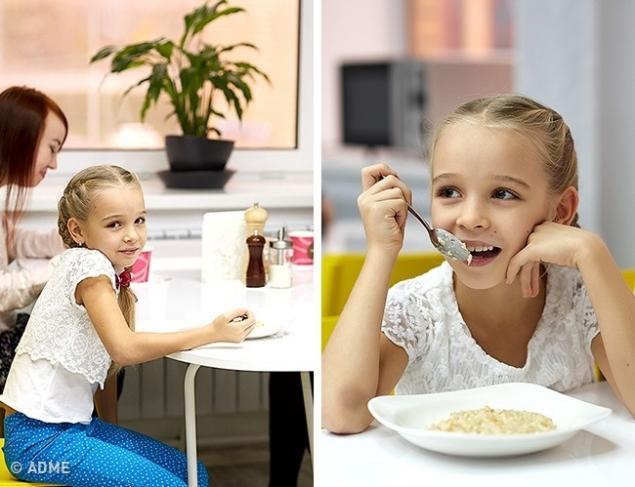
The test helps to determine which type of social behavior characteristic of the child: to agree with the majority, avoiding conflict, or to defend its own position — a trait that speaks of leadership qualities.
What you will need: several family members or friends (adults and children) and plates with sweet porridge (this is important!).
What to do and what to pay attention: adults and children sit at the table and eat cereal. Aloud notice that the porridge is too salty and impossible to eat. At this point it is important to pay attention to what is happening. Everyone present turns once more tries the porridge and confirms that it is too salty. Then the turn comes to the child. Ask him the same question: whether it seems to him that the porridge is salty? Children who it's important to keep the peace within the team that are not willing to "play against the rules", I will answer that the porridge salty. This situation they perceive as some kind of game, where suddenly the rules have changed. And not to be outdone by others, they follow the new rules, even if they seem unclear. Own opinion on the taste of porridge for them is not so important compared to the ability to "continue in". For example, the child responds that his sweet cereal, try porridge from his plate and confirm the same: "salty Porridge". If the child continues to defend their own point of view, he is definitely inherent leadership qualities — for it is not so much what people think of it around, as the fact that he will Express a thought that feels right to him.
4. Luscher test with colors
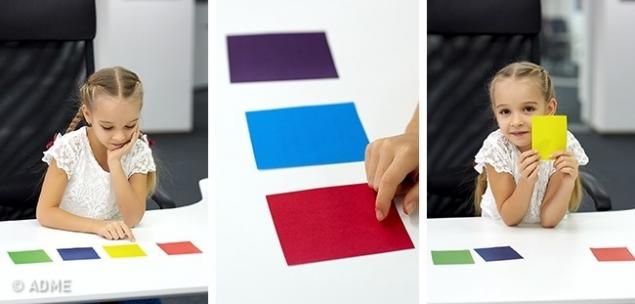
Thanks to this test in 5 minutes you can analyze the personality of the child based on his choice of colors. A test developed by Swiss psychologist max Luscher, who believed that the perception of colors objectively and universally, but colour preferences are subjective, reflect the psychological state of the subject, determine personality traits.
What to do and what to look for: you should click on the link and take the test with your child. Adult asks the child indicates the color. At the end of the site appears on the result.
5. Test "Righty or Lefty"
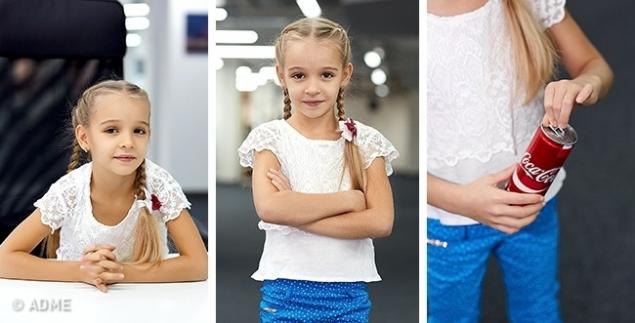
To determine which hand the child is active — left or right, easy to have in 2 years. Right-handers figuratively-motive is located to the right hemisphere and the logical left. Left-handers — on the contrary. Knowing this, you can determine what kinds of activities the child is easier to implement. Every second of us is left — handed and right-handed at the same time. Such people are called Ambidextrous. Determination of the dominant hand, the child helps parents in education: to teach a Lefty to use actively the right hand is wrong, as it negatively affects child development. Lefties tend to choose the profession of actors, artists, writers.
Option for the youngest children:
Pay attention to which hand the child uses most often: keeps the shoulder blade points to the right thing, reaching for food or takes a toy.
Options for children from 3 years:
- We offer you to gather the fingers to the castle. On top is the thumb of the hand that is active.
- Pay attention to which hand the child unscrews the lid of the bottle is the dominant hand.
- Ask the child to cross his arms. That is a hand that will be on top, is active.

Dr. Davis suggested that even at a young age the child's brain determines how to eat properly. For the first test Clara chose three children from 8 to 10 months, which were at first fed only on breast milk, and therefore not decided on the eating habits. Now during each meal before the kids set up to 8 plates. They vegetables, fruits, eggs, cereals, meat, black bread, milk, water and juices. The children decided themselves, that is: if the kid put his hand in rice porridge, and then licked his hand, then gave him a teaspoon of rice porridge. Then again waited until the baby was chosen. He could wish for cereal or to choose something else. So Davis found three things:
Children independently choose the best menu from among simple dishes, developed very well. None of them gained excess weight and became skinny. Despite the apparent disorder, the child within a certain period of gaining all the necessary elements, as if followed a special diet. On different days and even times of the day appetite of the child changed. But it had no effect on the final result. One of the kids a couple of days eating only vegetables, and then suddenly interested in the meat or fish. The share of a product could also vary: at some point, the child wanted a lot of milk, immediately after that time would like to forget about it. Therefore, the child's brain independently determined depending on the needs of the body that you need to eat. This same experiment Clara Davis repeated with older children, separately studying the behavior of healthy and ailing children, but the results were the same. What to do and what to look for: the experiment can be easily repeated at home, dividing the ration by type of products: vegetables, meat, fish, fruit, brown bread, cereals, dairy products, juices and tea. The child together with the adult to draw up a diet on 1-2 days in advance. Some scholars have pointed out the importance of selecting products according to the principle of seasonality. For example, in June to offer a child fruit among the strawberries, and in August the melon or watermelon.
Model: Samira Yunus, Alir.
Photographer: Roman Zakharchenko
See also
6 simple experiments for children, bordering on magic
7 a hell of a fun scientific experiments for kids
8 magical experiences that will make children gasp
via www.adme.ru/zhizn-nauka/8-volshebnyh-opytov-kotorye-zastavyat-detej-ahnut-1073560/
This businessman from India deserves the title of "Boss of the year", and here's why
Carbohydrate-free diet for the lazy: a sure way to get rid of the fat layer.
























